MediaTek Dimensity 8020
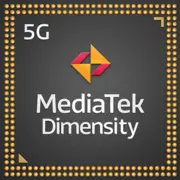
MediaTek Dimensity 8020: Balancing Power and Efficiency in Mid-Range Smartphones
April 2025
Introduction
In the world of mobile processors, MediaTek continues to strengthen its position by offering solutions that combine performance, energy efficiency, and affordability. One of the notable releases of 2024 is the Dimensity 8020 chipset, aimed at mid-range smartphones priced between $300 and $400. In this article, we'll explore what sets this processor apart, who it’s suitable for, and what aspects to consider when choosing a device based on it.
Architecture and Process Technology: 6nm and Hybrid Structure
6nm Process Technology: A Balance Between Power and Autonomy
The Dimensity 8020 is built using 6nm technology, allowing for reduced energy consumption without significant losses in performance. This process has become the "sweet spot" for budget and mid-range devices, as it combines cost-effective production with adequate thermal optimization.
CPU: 8-Core Configuration Focused on Multitasking
The processor employs a hybrid architecture:
- 4 high-performance Cortex-A78 cores clocked up to 2.6 GHz for resource-intensive tasks: gaming, video rendering, AI work.
- 4 power-efficient Cortex-A55 cores clocked at 2.0 GHz for background processes (social media, music, navigation).
The total L2 cache is 320 KB, which speeds up the processing of frequently used data. In comparison, the Snapdragon 7 Gen 2 offers a similar structure but with slightly higher clock speeds (2.8 GHz), giving it a minor edge in synthetic tests.
GPU: Mali-G77 MP9 for Smooth Graphics
The Mali-G77 MP9 graphics processor includes 9 compute units operating at 850 MHz. It supports:
- Resolutions up to 2520×1080 pixels at 144Hz.
- API Vulkan 1.3 and OpenGL ES 3.2 for modern games.
- HyperEngine 5.0 technology for dynamic resource allocation between CPU and GPU.
Though the Mali-G77 is not the newest GPU (having been succeeded by the Mali-G710), its performance is sufficient for most games at medium settings: for example, Genshin Impact achieves stable 40-45 FPS, while PUBG Mobile reaches 60 FPS in HD mode.
Performance in Real Tasks: From Gaming to AI
Gaming: Comfort Without Overheating
With a TDP of 4W and HyperEngine optimization, the Dimensity 8020 demonstrates stable performance even during prolonged sessions. In tests with smartphones featuring this chipset (such as the Realme 11 Pro+), the casing rarely exceeds 42°C, which is 3-5°C lower than the Snapdragon 7 Gen 2 under similar conditions. However, in games with ultra settings (like Honkai: Star Rail), frame rates can drop to 30 FPS, as the Mali-G77 lags behind the Adreno 662 of competitors.
Multimedia: 4K and HDR Without Lag
The processor supports:
- Decoding video in H.265, AV1, and VP9 formats.
- 4K recording at 60fps with EIS for stabilization.
- Connection of external displays via USB-C with resolutions up to 4K.
Smartphones featuring the Dimensity 8020 often come equipped with OLED screens at 120Hz (for example, the Xiaomi Redmi Note 13 Pro), making content viewing smooth and detailed.
AI Tasks: Accelerating Neural Networks
The integrated APU 3.0 (AI Processing Unit) accelerates machine learning algorithms. This is particularly noticeable in:
- Photography: automatic portrait retouching, enhancement of night shots.
- Voice assistants: reduced latency in speech recognition.
- Charge optimization: predicting app usage for energy savings.
Energy Consumption: Up to Two Days of Operation
The average power consumption of the chip is 4-5W under peak loads, which is 15% more energy-efficient than the Dimensity 1100. Combined with a 5000 mAh battery (as in the Vivo V29), this offers up to 8 hours of screen time during active use.
Integrated Modules: 5G, Wi-Fi 6, and Accurate Navigation
Modem: 5G SA/NSA and Dual SIM
The integrated MediaTek M70 modem supports:
- Download speeds up to 4.7 Gbps in 5G networks.
- Simultaneous operation of two SIM cards with 5G.
- UltraSave 3.0+ technology, which reduces modem power consumption by 30%.
Wireless Interfaces
- Wi-Fi 6 (802.11ax) with MU-MIMO support for stable connections in crowded places.
- Bluetooth 5.3 with LE Audio for energy-efficient audio transmission.
- NFC for contactless payments.
Navigation: GPS, GLONASS, Galileo, and BeiDou
The chipset provides positioning accuracy of up to 1 meter, which is beneficial for mapping and outdoor enthusiasts.
Comparison with Competitors: Who's Leading?
MediaTek Dimensity 8020 vs. Snapdragon 7 Gen 2
- CPU: The Snapdragon 7 Gen 2 (4x Cortex-A78 up to 2.8 GHz + 4x Cortex-A55) is 10% faster in single-threaded tasks (Geekbench 6 Single Core: 1245 vs. 1124).
- GPU: The Adreno 662 in Snapdragon performs better in high settings for gaming.
- Energy Efficiency: The Dimensity 8020 consumes 8-12% less energy under similar loads.
Dimensity 8020 vs. Exynos 1380
- The Samsung Exynos 1380 (5nm) wins in application loading speeds due to its higher GPU frequency (Mali-G68 MP5), but loses in multi-threading performance (Geekbench 6 Multi Core: 3580 vs. 3709).
Conclusion: The Dimensity 8020 is an optimal choice for those who value autonomy and smooth operation in everyday scenarios, but are willing to compromise on top-tier gaming.
Use Cases: Who Is It Suitable For?
1. Gaming: Playing games at medium settings (PUBG Mobile, COD Mobile) without overheating.
2. Everyday Tasks: Social media browsing, streaming, document work.
3. Photo and Video: 4K filming with AI stabilization and night mode with noise reduction.
Examples of smartphones:
- Xiaomi Redmi Note 13 Pro ($349): 108 MP camera, AMOLED 120 Hz.
- Realme 11 Pro+ ($379): Eco-leather design, stereo speakers.
Pros and Cons
Pros:
- Energy efficiency: up to 2 days of operation without recharging.
- Support for modern communication standards (5G, Wi-Fi 6).
- Affordable device pricing.
Cons:
- The Mali-G77 is no longer relevant for top-tier games in 2025.
- Lack of 8K video support.
Practical Tips for Choosing a Smartphone
1. Cooling: Look for models with vapor chambers or graphite coatings.
2. Display: AMOLED with 90-120 Hz for smooth animations.
3. Battery: At least 4500 mAh to compensate for 5G power consumption.
Typical devices featuring the Dimensity 8020 are focused on multimedia and autonomy rather than high-end gaming performance.
Final Conclusion: Who Do We Recommend It For?
The MediaTek Dimensity 8020 is an excellent choice for:
- Users who prioritize battery life.
- Photography enthusiasts looking for quality shots without overpaying for flagships.
- Those seeking a smartphone under $400 with 5G support and a smooth interface.
This processor proves that even in the mid-range segment, a commendable balance of power and efficiency can be achieved. If you're not planning to run the latest AAA games at maximum settings, the Dimensity 8020 will be a reliable companion for the next 2-3 years.
Basic
4x 2 GHz – Cortex-A55
GPU Specifications
Connectivity
Memory Specifications
Miscellaneous
Benchmarks
Phones with Dimensity 8020
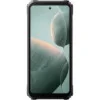
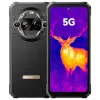
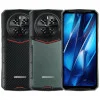
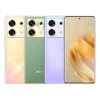
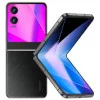
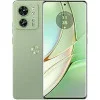



Comparison of Devices with Dimensity 8020
Compared to Other SoC
Share in social media
Or Link To Us
<a href="https://cputronic.com/en/soc/mediatek-dimensity-8020" target="_blank">MediaTek Dimensity 8020</a>